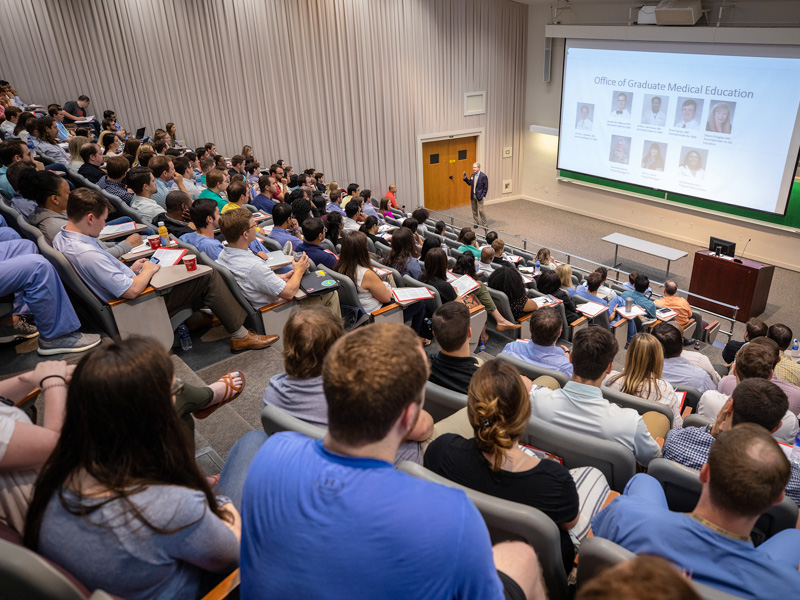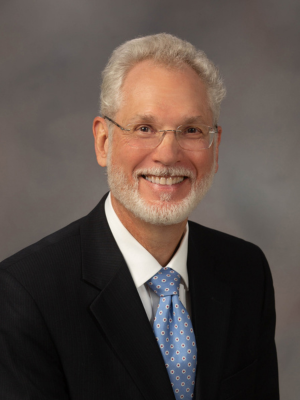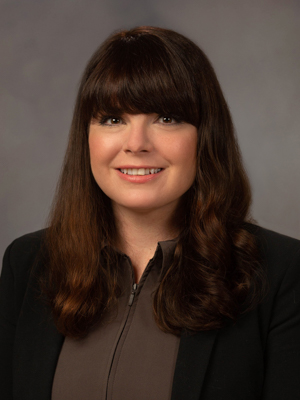Faculty satisfaction survey: UMMC shines in collegiality, diversity, governance

Faculty at the University of Mississippi Medical Center overwhelmingly agree – with a satisfaction summary score of 84 percent – that they have a feeling of “collegiality and collaboration” at work, defined by a sense of belonging, and interactions with and appreciation by colleagues.
Not only was collegiality and collaboration UMMC’s highest scoring category, but the Medical Center also scored higher than its cohort average of 81 percent, during a pandemic no less.
Those results represent just one highlight of the latest StandPoint Faculty Engagement Survey, administered by the Association of American Medical Colleges to a cohort of 29 medical schools in October.
Every two years, UMMC faculty complete the survey that measures their satisfaction across 14 areas including workplace culture, governance, promotion and tenure, diversity and inclusion, and compensation and benefits.
Faculty leaders use that data to make action plans designed to create the kind of workplace that facilitates excellent institutional performance and quality health care. According to the latest results, UMMC faculty expressed more satisfaction than their cohort in all areas except one: faculty recruitment and retention, at 60 percent (the cohort average is 65 percent).

“I’m continually impressed by the fact that our level of engagement and satisfaction by faculty rivals schools that have a lot more resources than we do, and they’re in different states with different populations,” said Dr. Patrick Smith, chief faculty affairs officer and professor of family medicine. “And as you think about the state that we’re in and the people that we serve, and the needs that we have, and the resource limitations, our faculty has really done an exceptional job.”
The areas in which UMMC most outshone cohort institutions were faculty diversity, equity and inclusion (81 percent compared to the 70 percent cohort average); department governance (81 percent compared to 71 percent cohort); and promotion and tenure requirements (74 percent compared to 63 percent cohort).
Smith uses those numbers as a recruitment tool.
“When I’m invited to meet with a faculty candidate,” he said, “I will often show them the StandPoint results and encourage them, if they’re looking at jobs at other institutions, to ask those other institutions if they have similar kinds of data and learn if they are creating change based upon faculty input.”

It’s not all about comparing to other institutions, however. The goal is to make improvements with each new cycle, and UMMC achieved that in five areas, with the most significant growth from 2018 to 2021 in promotion and tenure requirements (from 68 percent to 74 percent), something school deans are increasingly focusing on, said Molly West, faculty development director for the Office of Faculty Affairs.
“The StandPoint survey results provide really rich data sets with over 200 reports, which can be a lot to digest,” said West. “Our office works with the AAMC team in D.C. to provide analysis and an action toolkit that recommends that leaders pick two to three areas to engage faculty, make a plan, and measure again in two years.
“That’s the stage we’re in right now for deans and chairs. Leaders often create focus groups and work with faculty to figure out how they can make that turn, and it’s important to have this engagement because it contextualizes the data and primes areas for meaningful change.”
The data will be made available on the faculty affairs page, which should go live in May, said West.
Faculty satisfaction isn’t just something the people in faculty affairs analyze after every survey; it’s an ongoing process, said Smith.
During last month’s SACSCOC accreditation visit, Smith recalls two site visitors asking if the Medical Center is continuously trying to improve only in response to accreditation.
“And I don’t think that’s the case,” Smith explained. “We’ve been looking at this for over 10 years now and using it to try to make things better which so happens to align with accreditation intentions. So that’s a feature I think is important – continuous improvement – and it’s now being considered at the institutional level, at the school level, and at the departmental level. And in some of the departments even at a division level.
“So, we’re trying to weave this ongoing continuous improvement based upon faculty input throughout all layers of the institution.”


